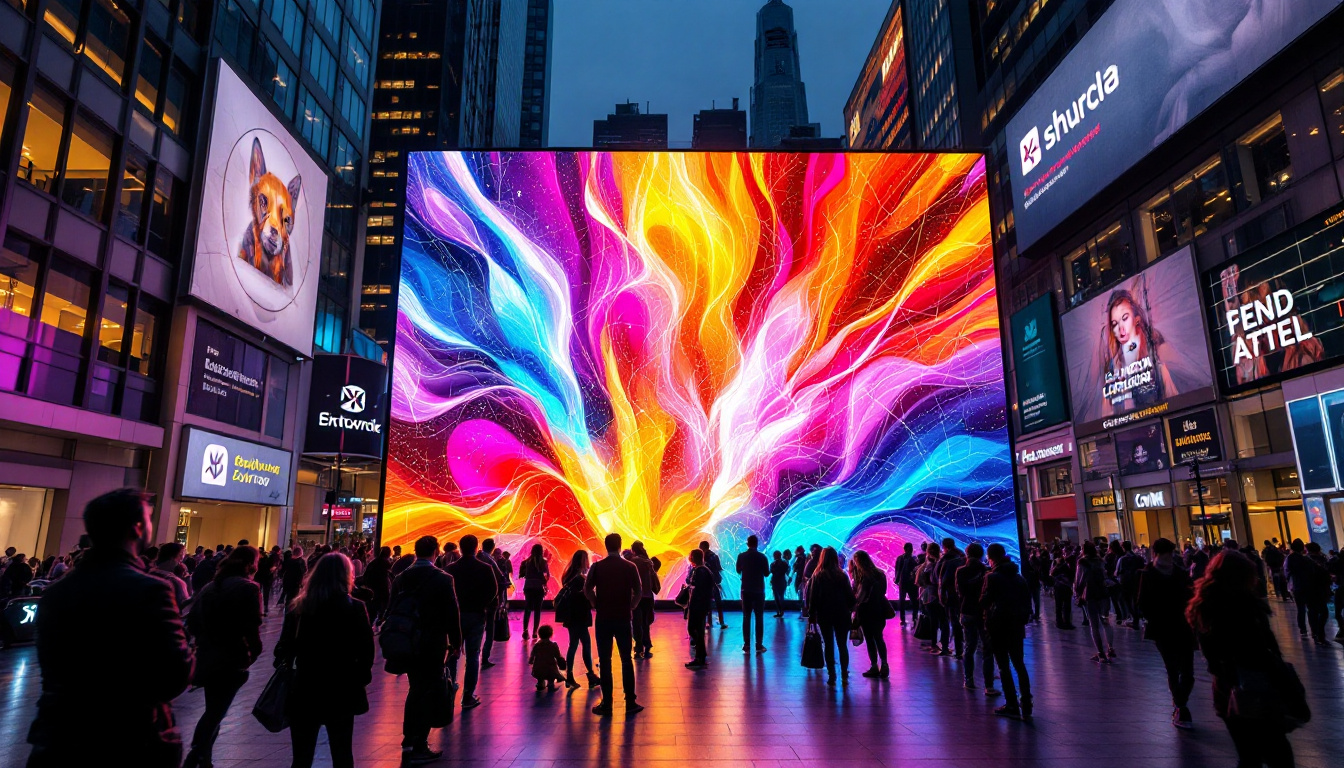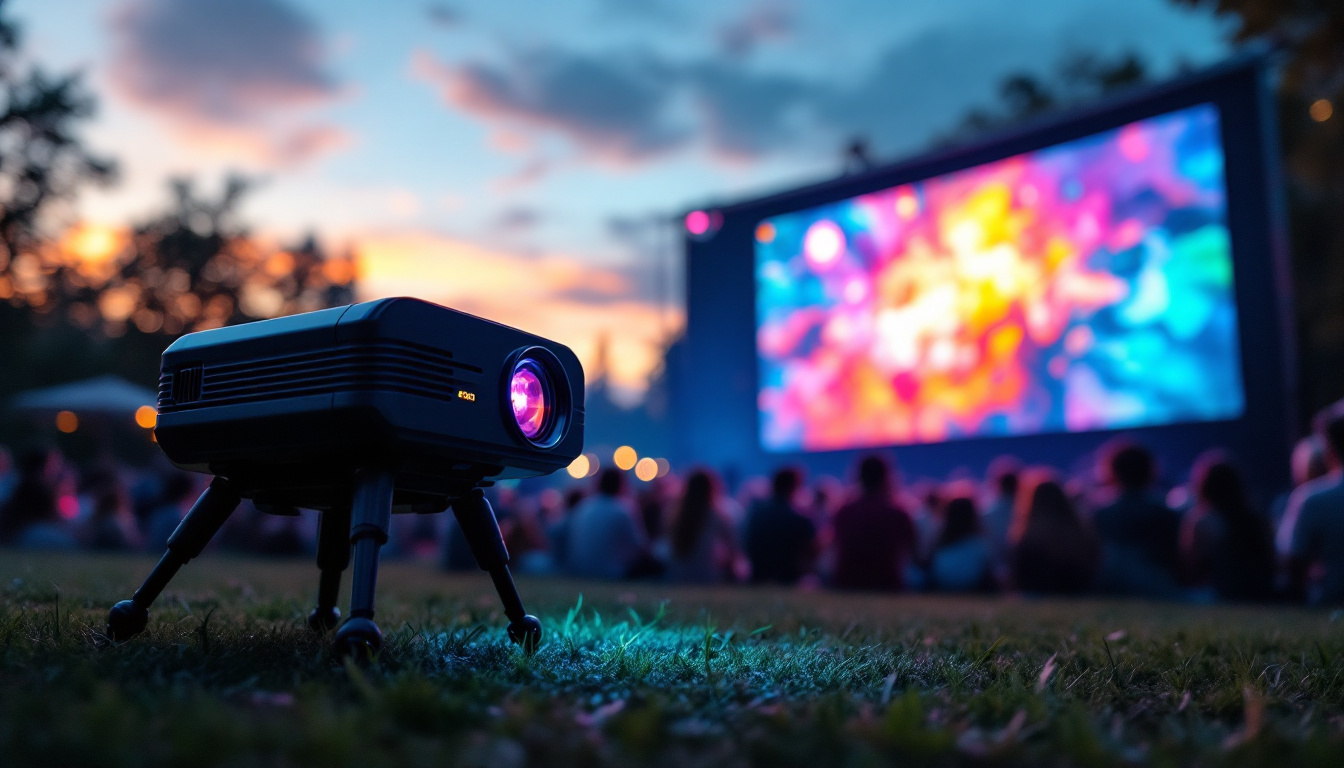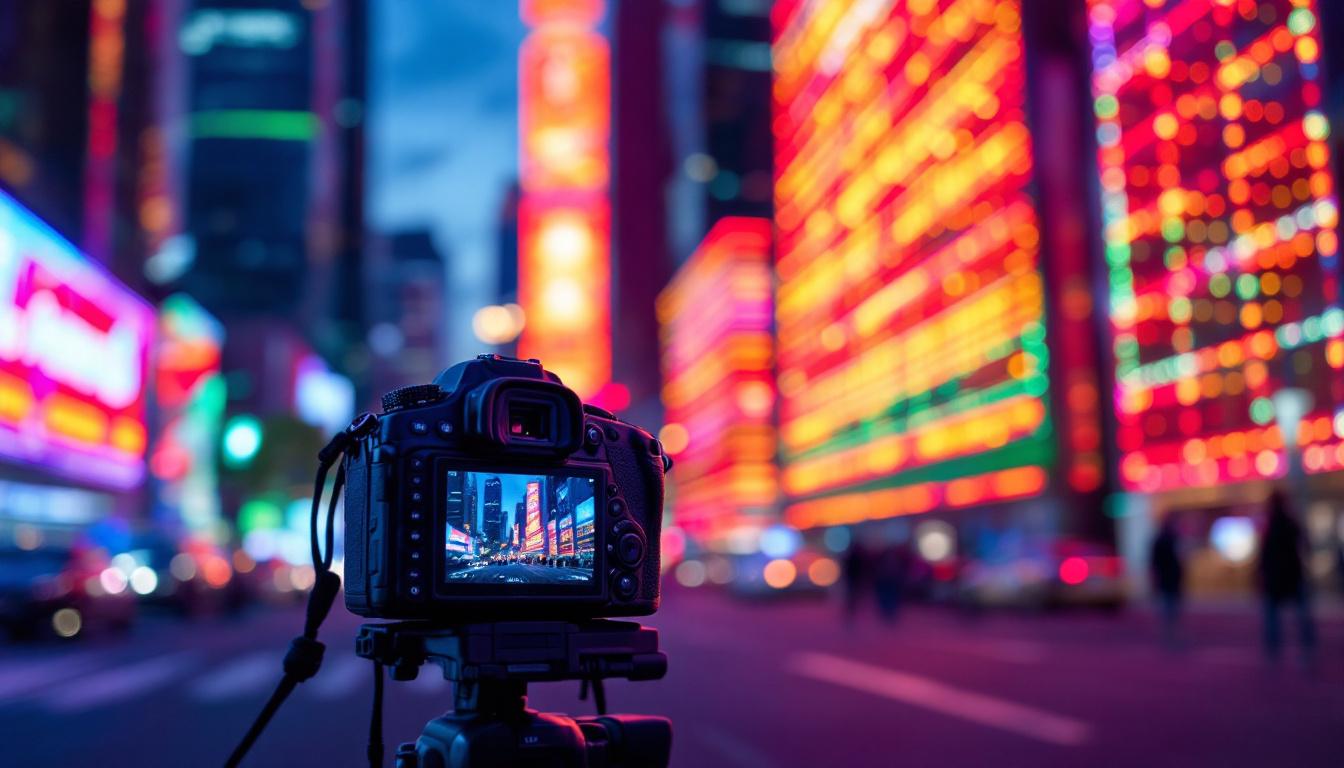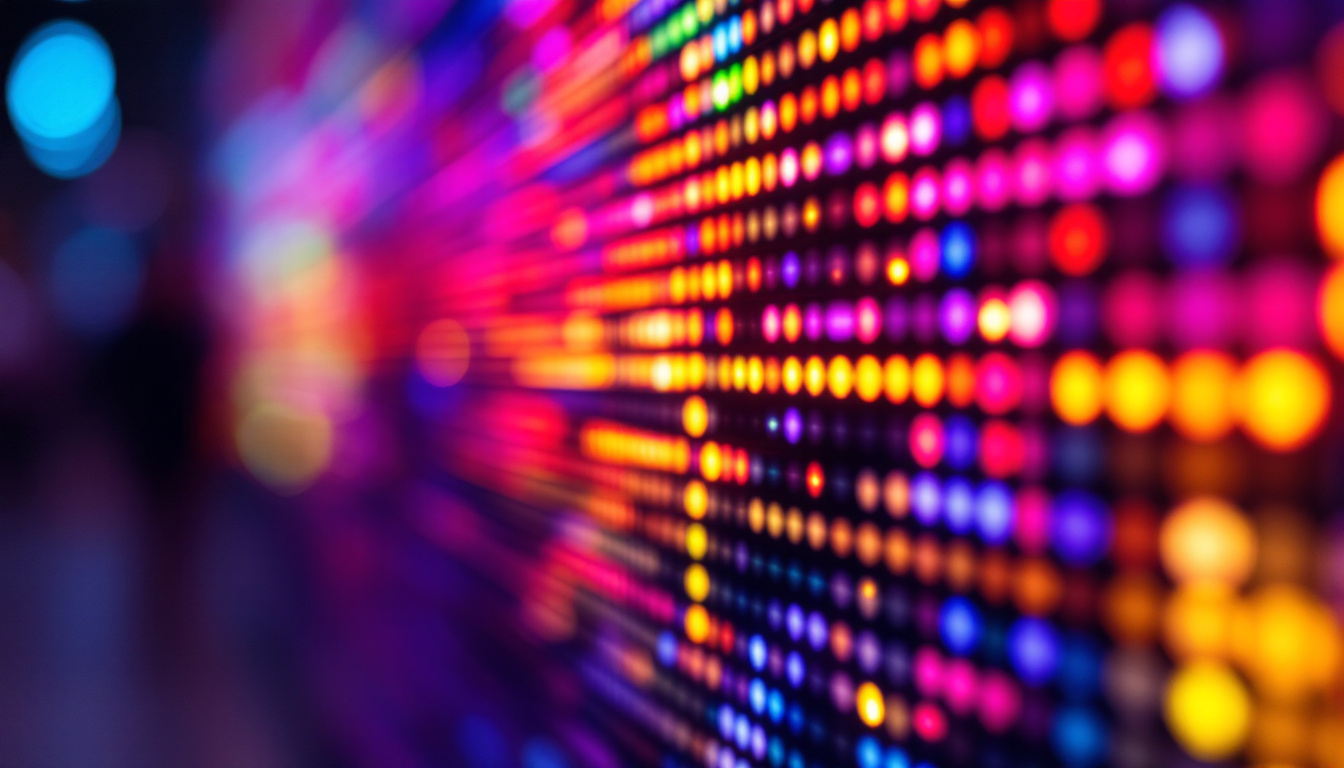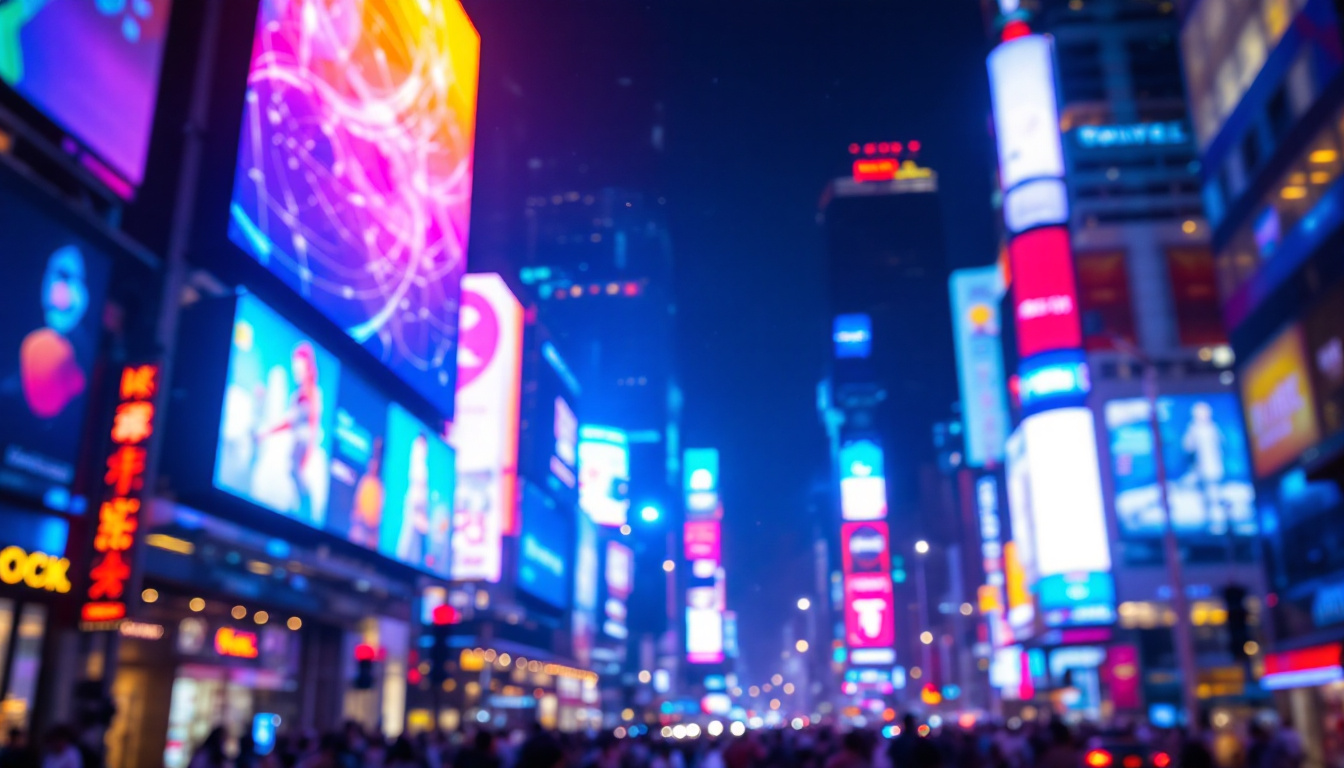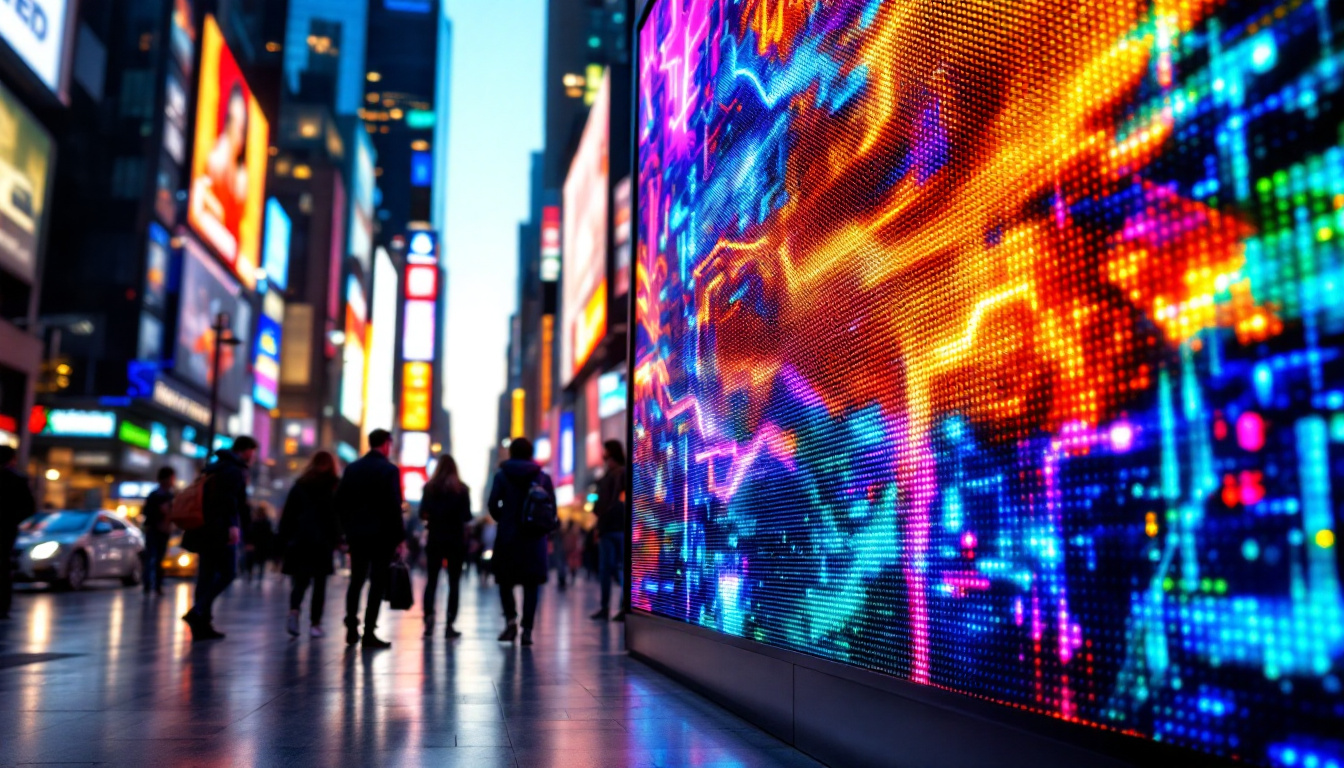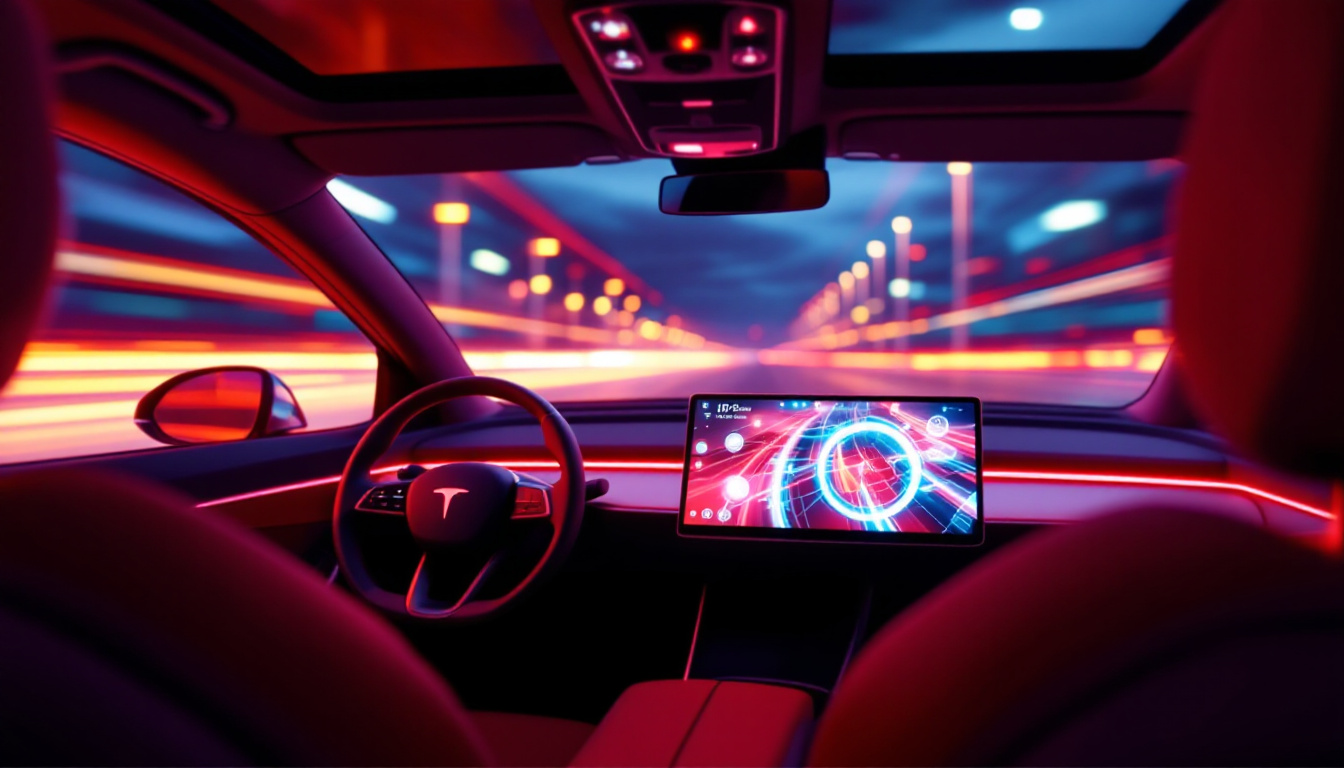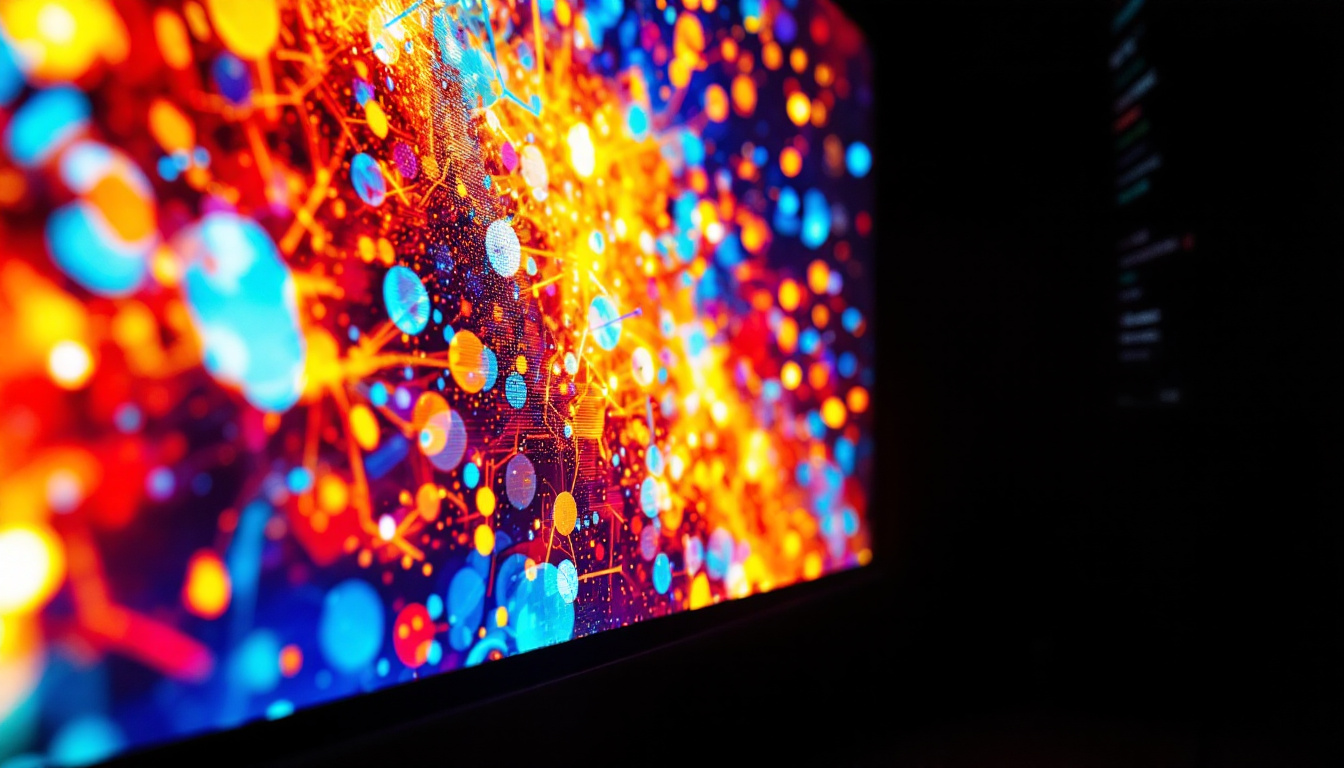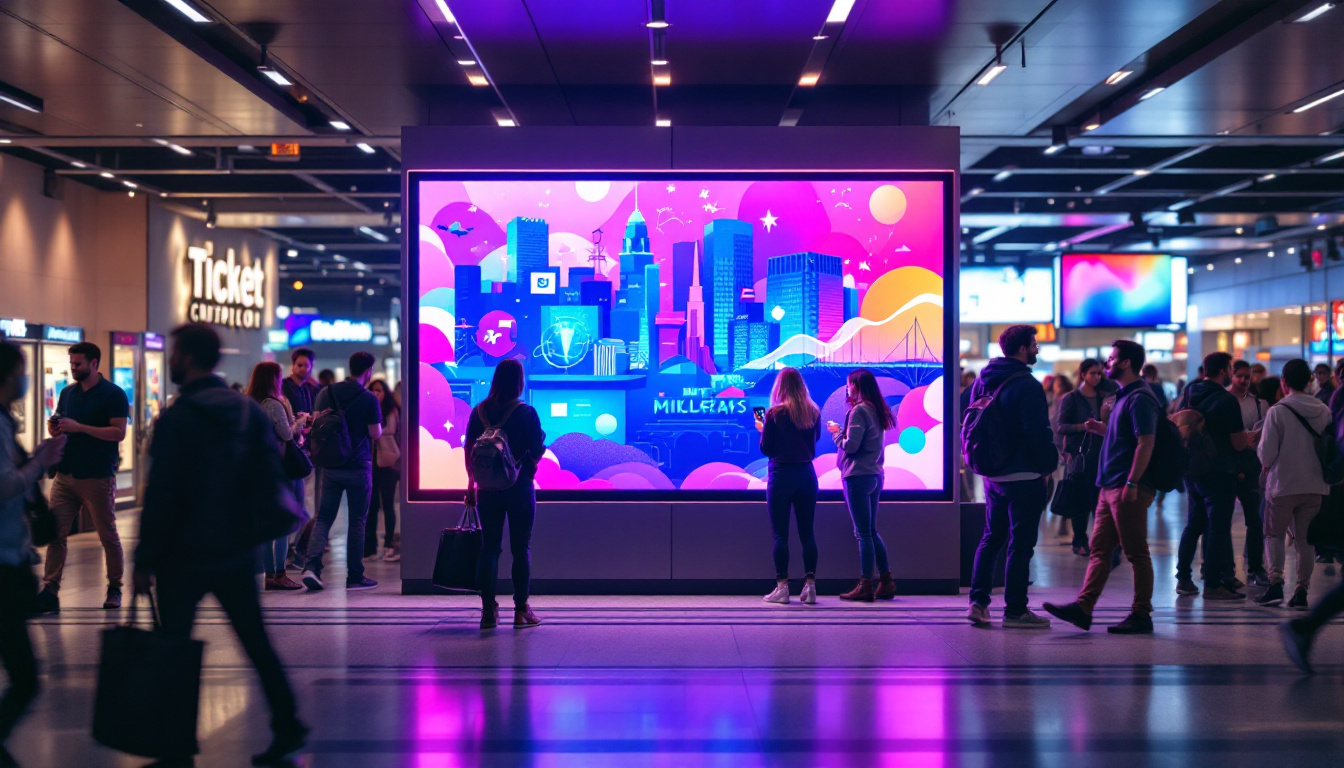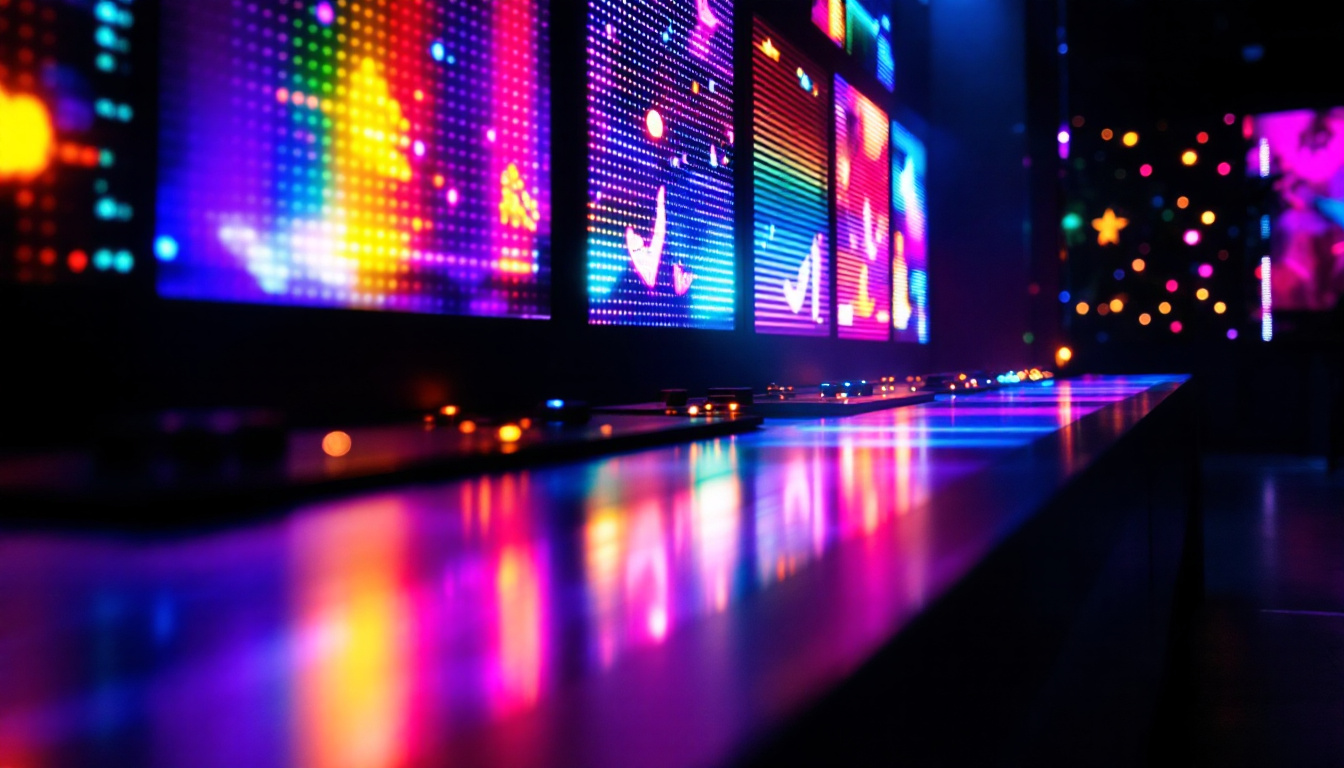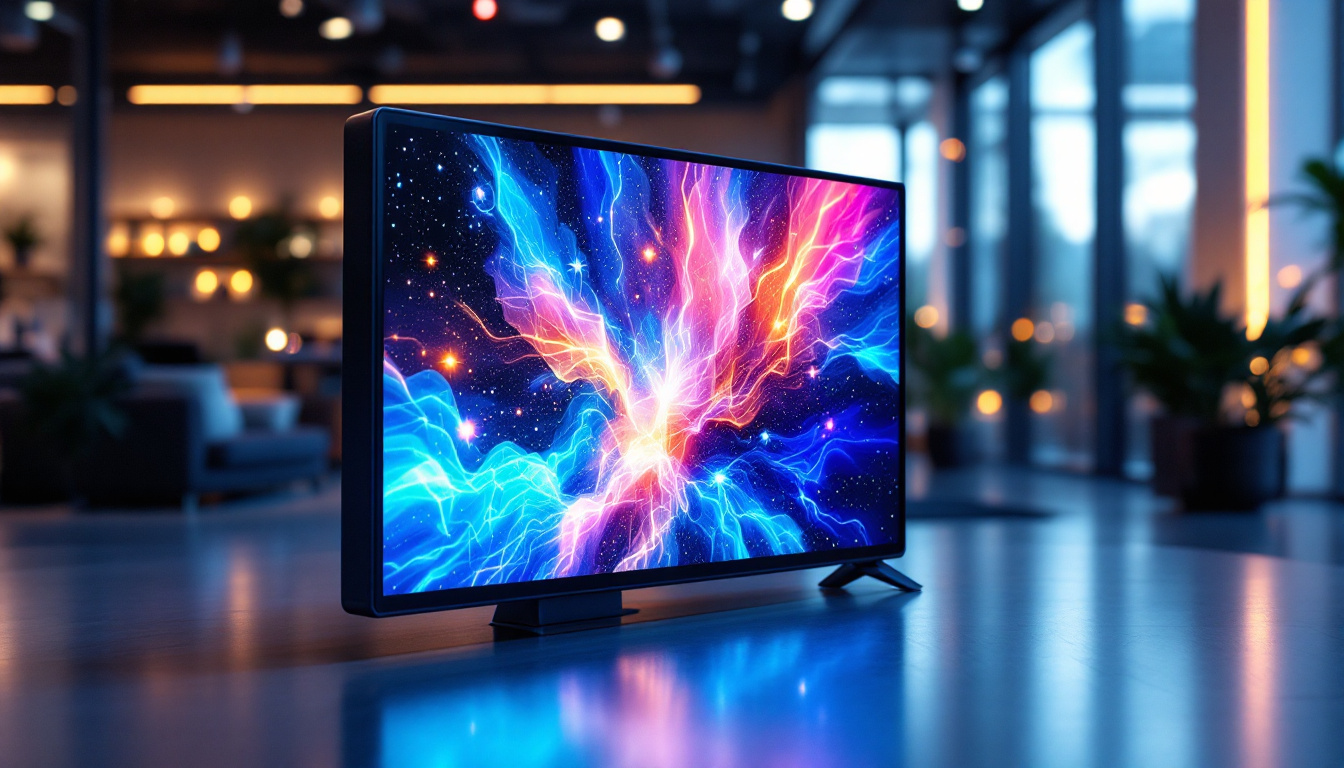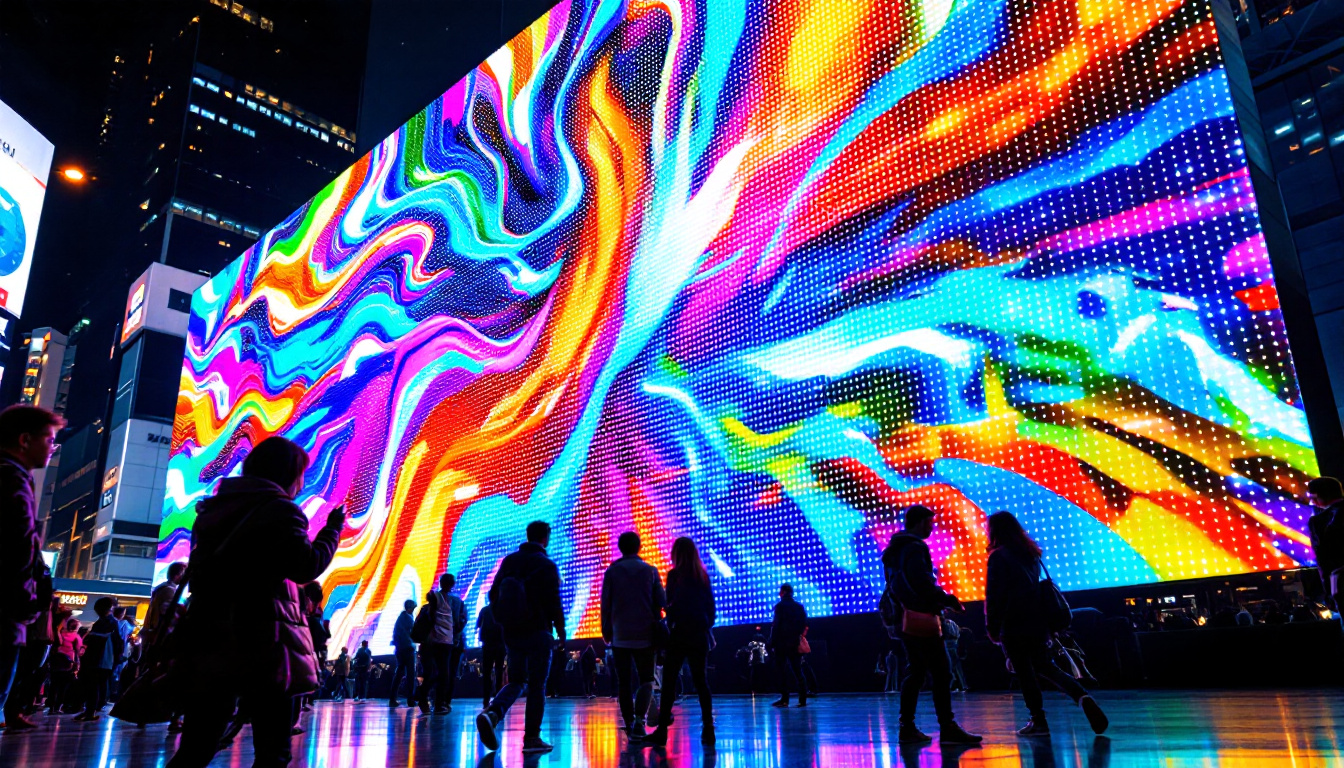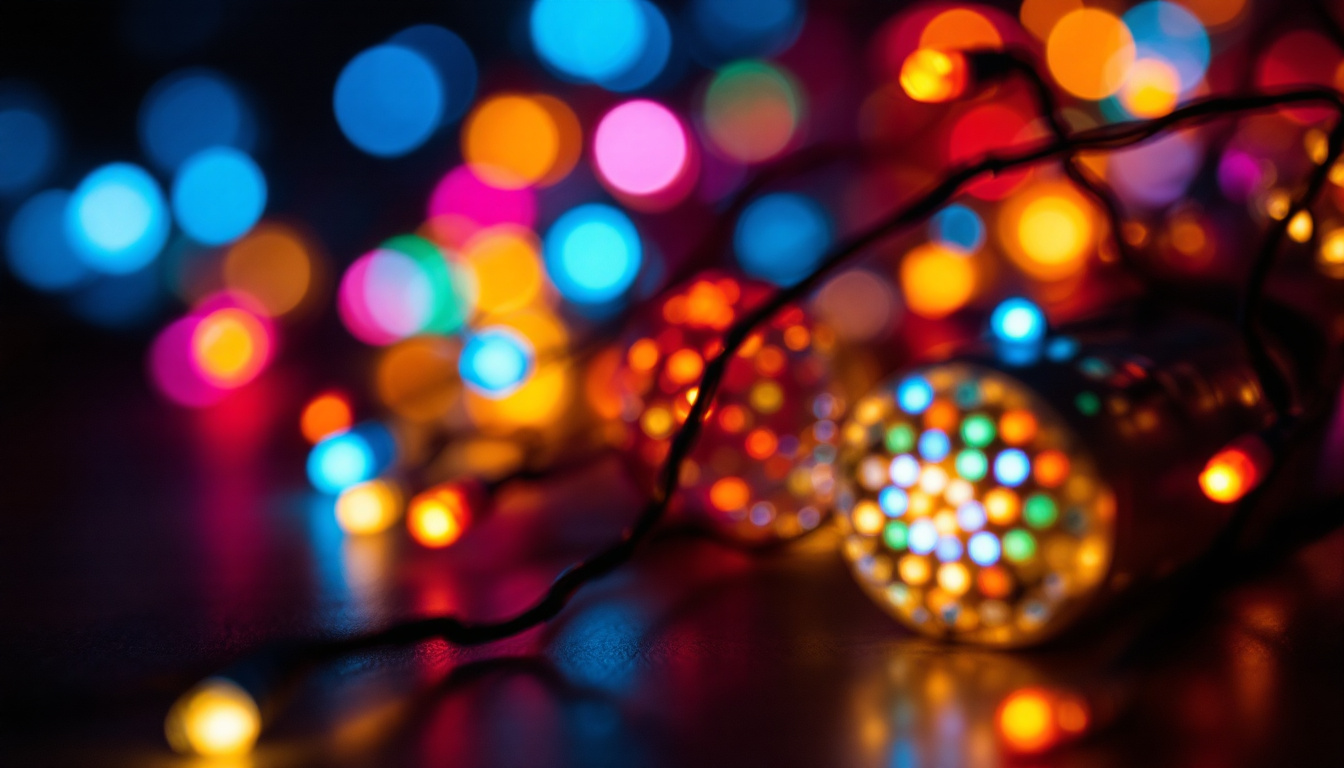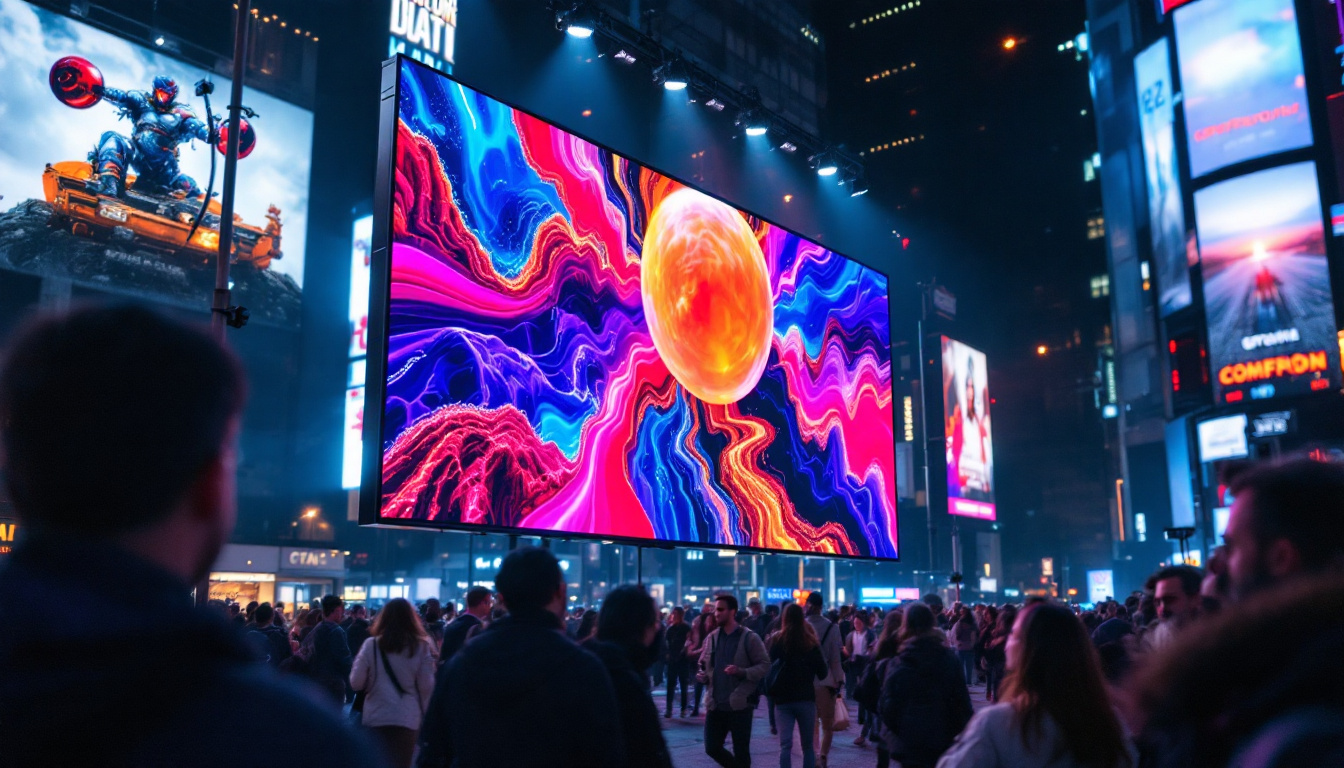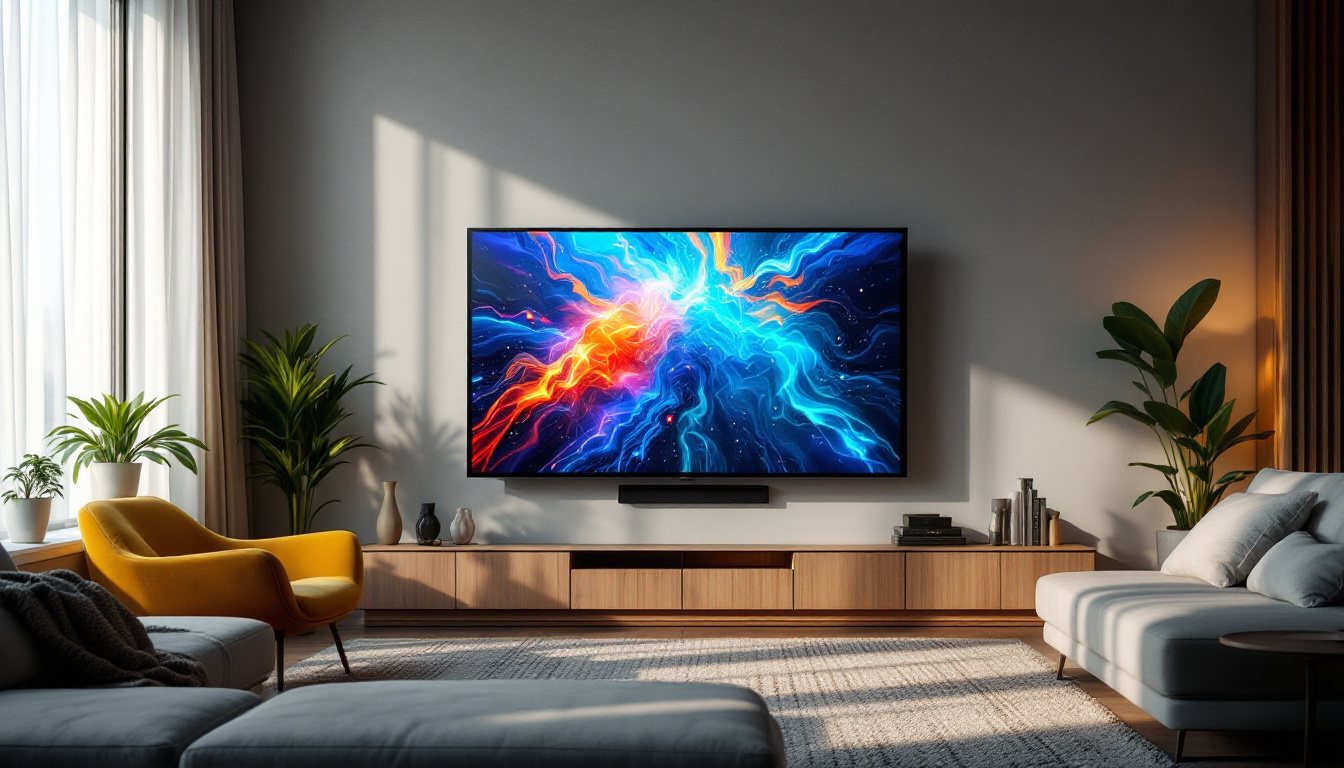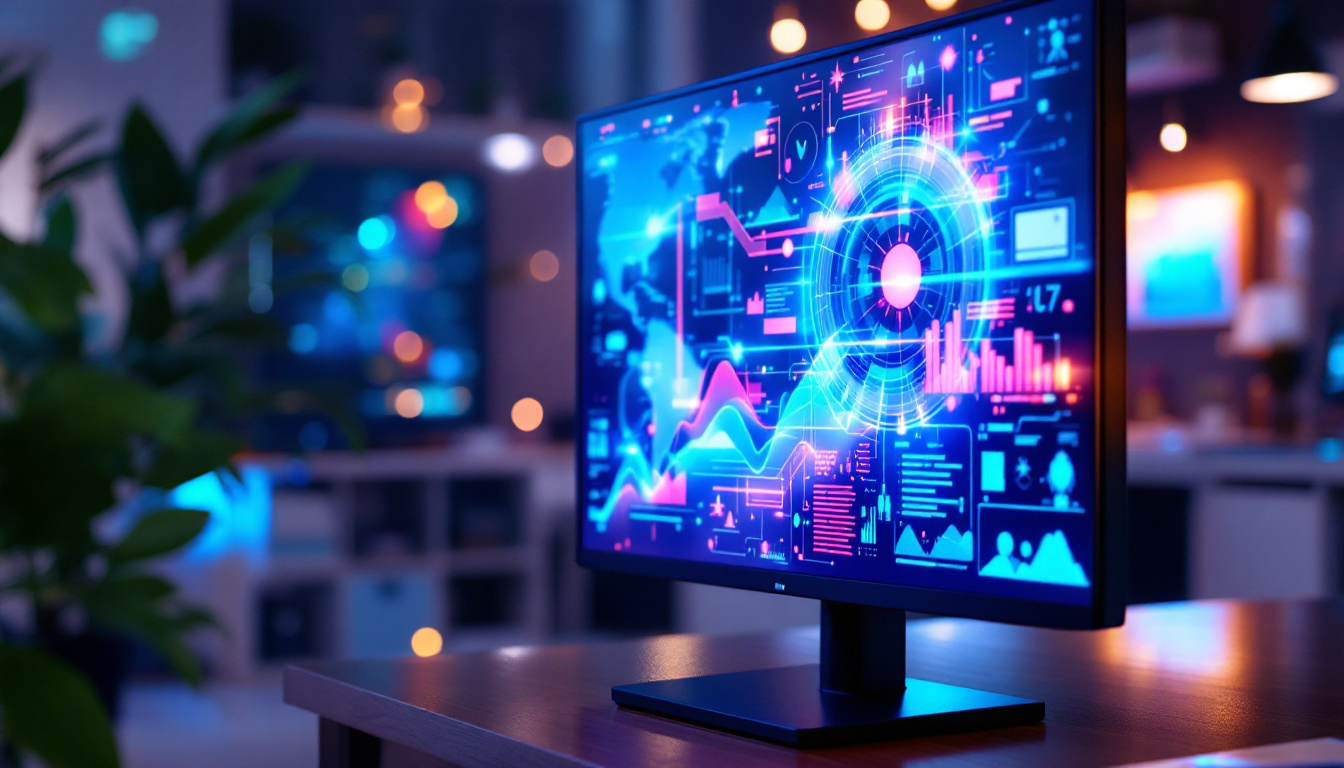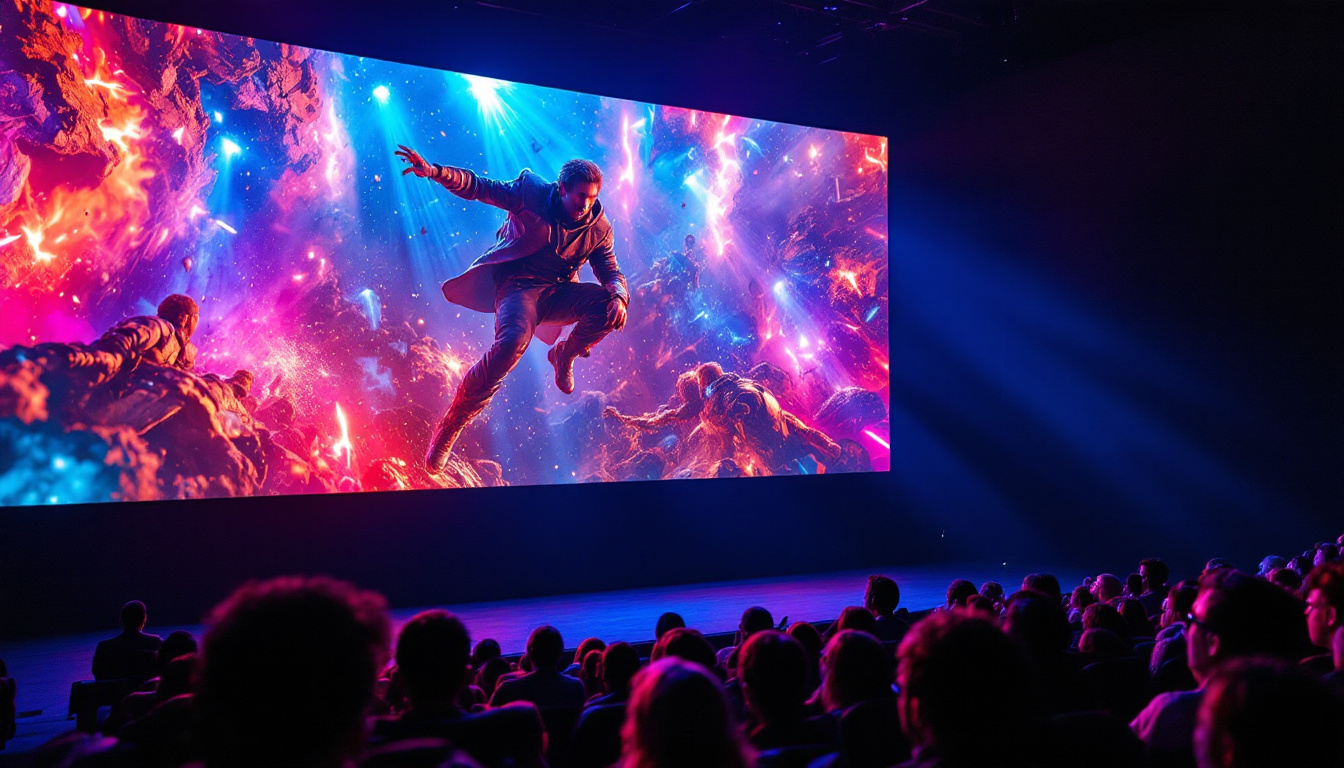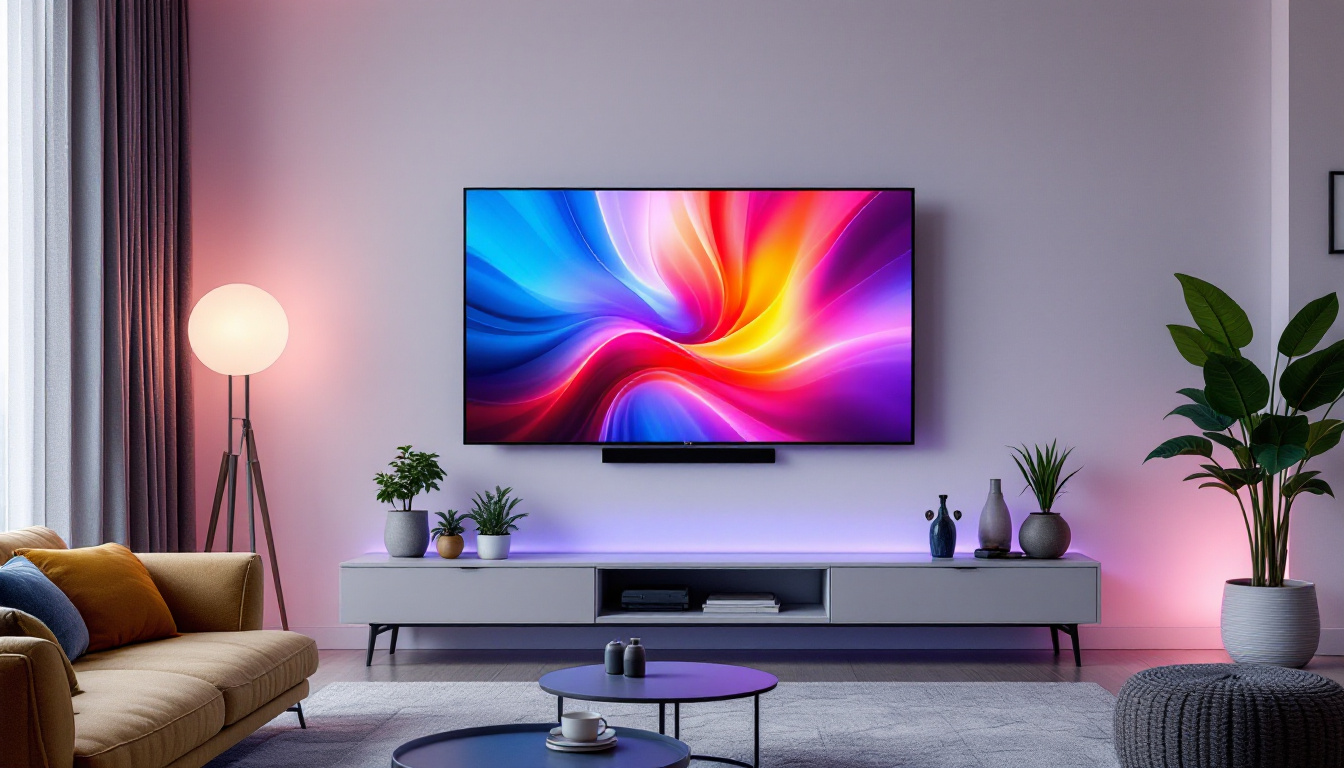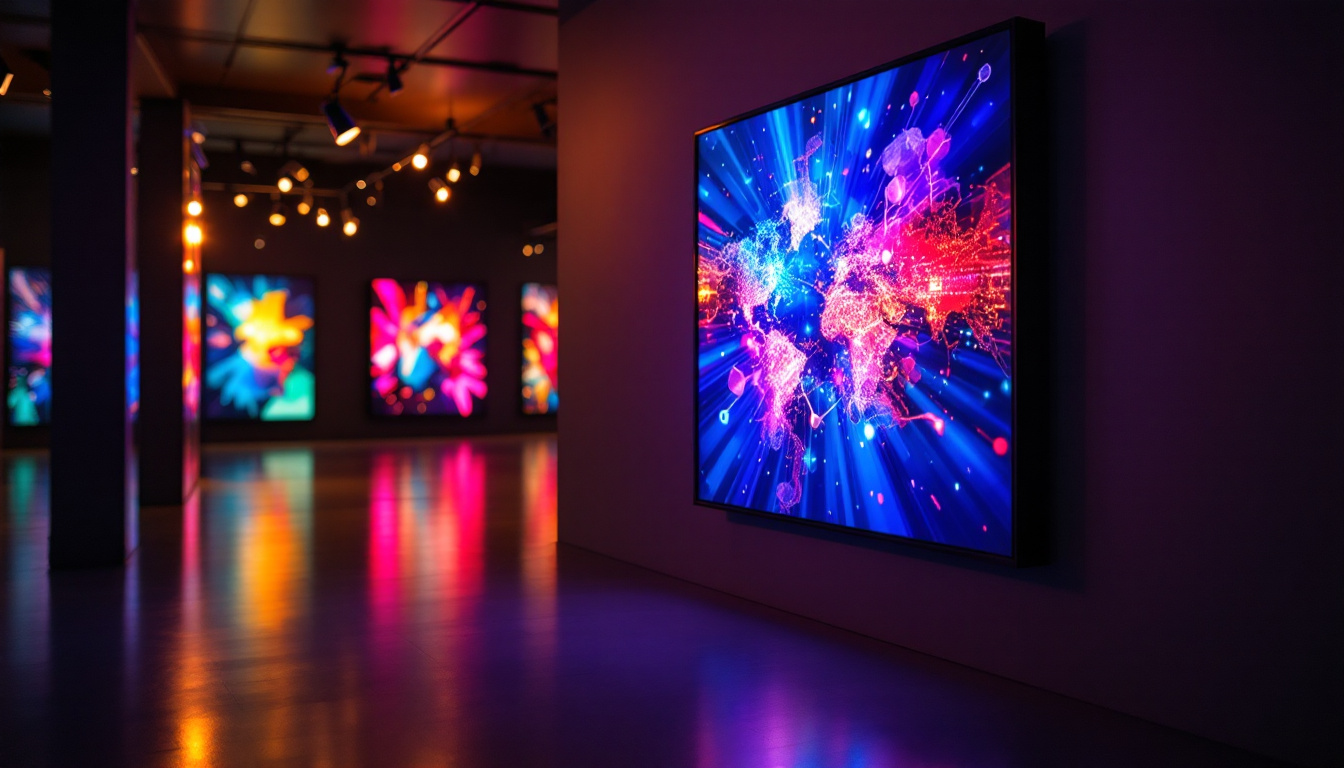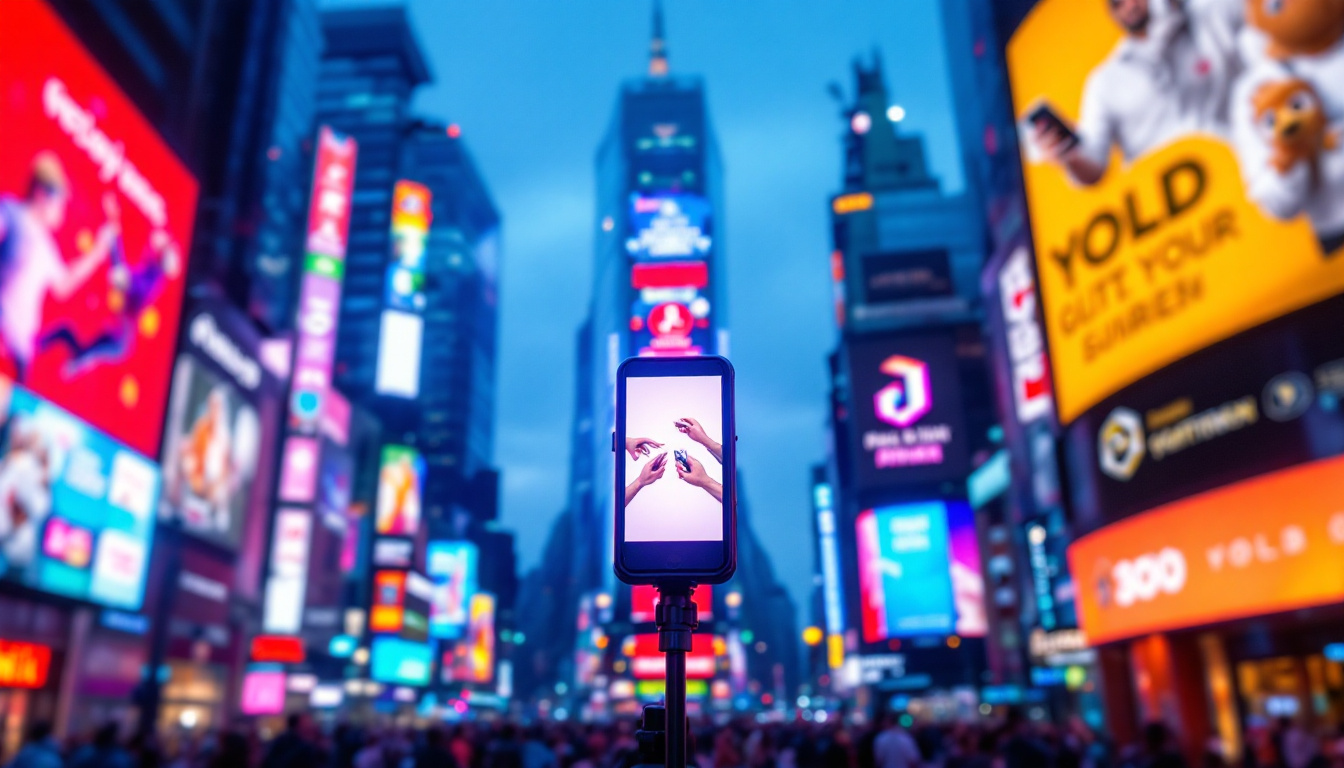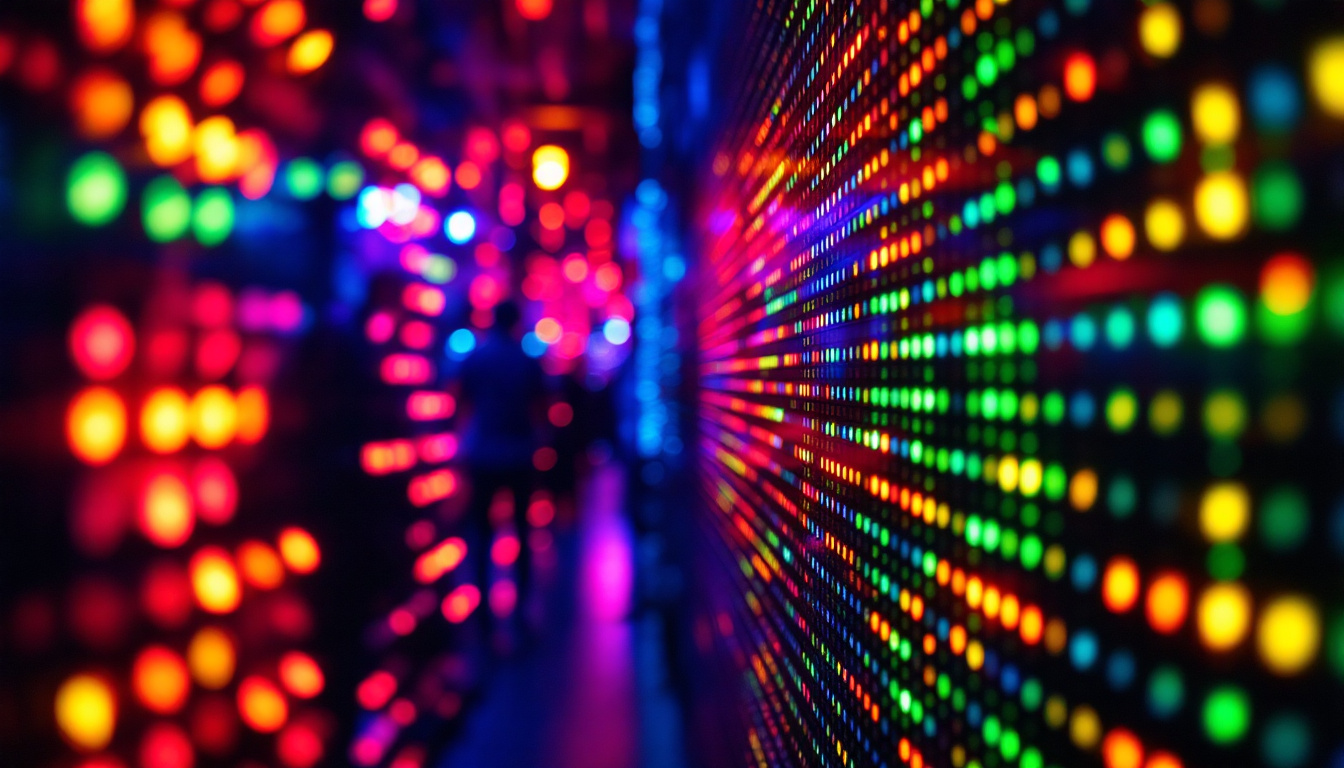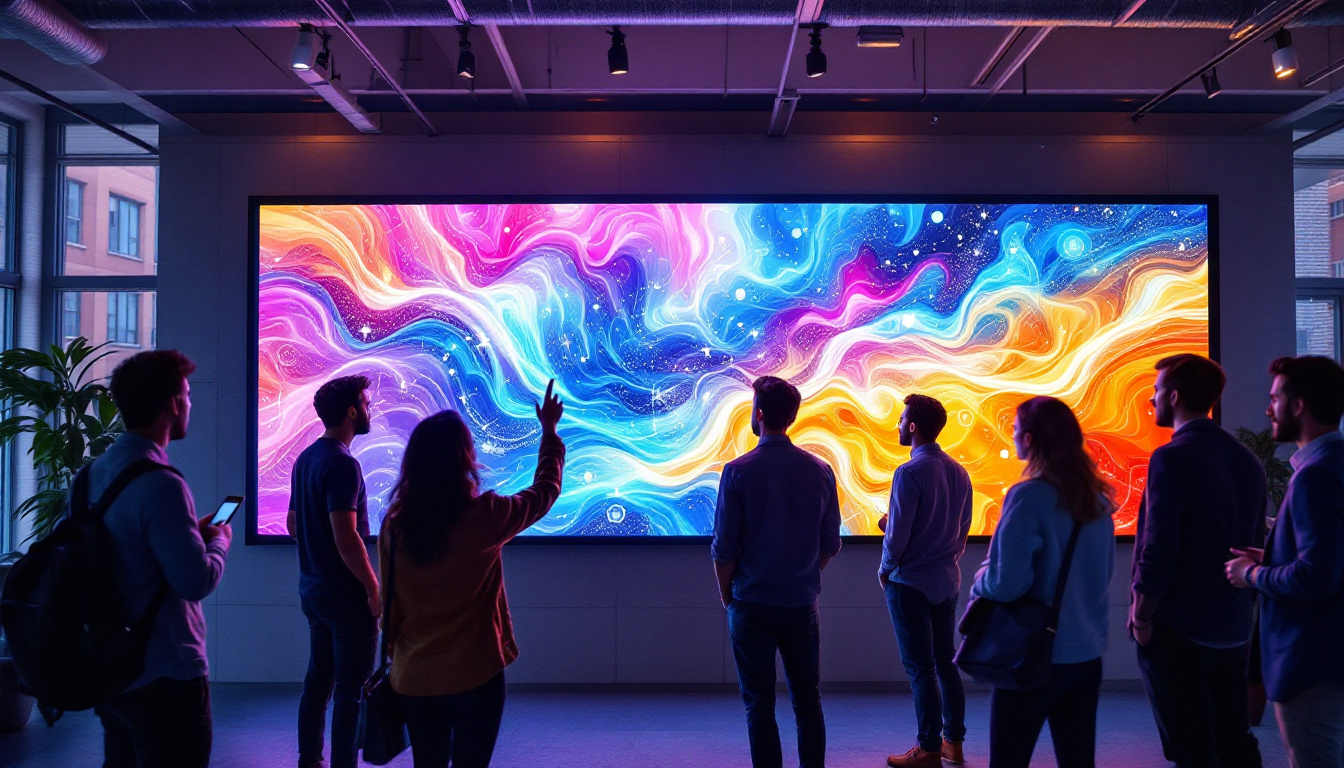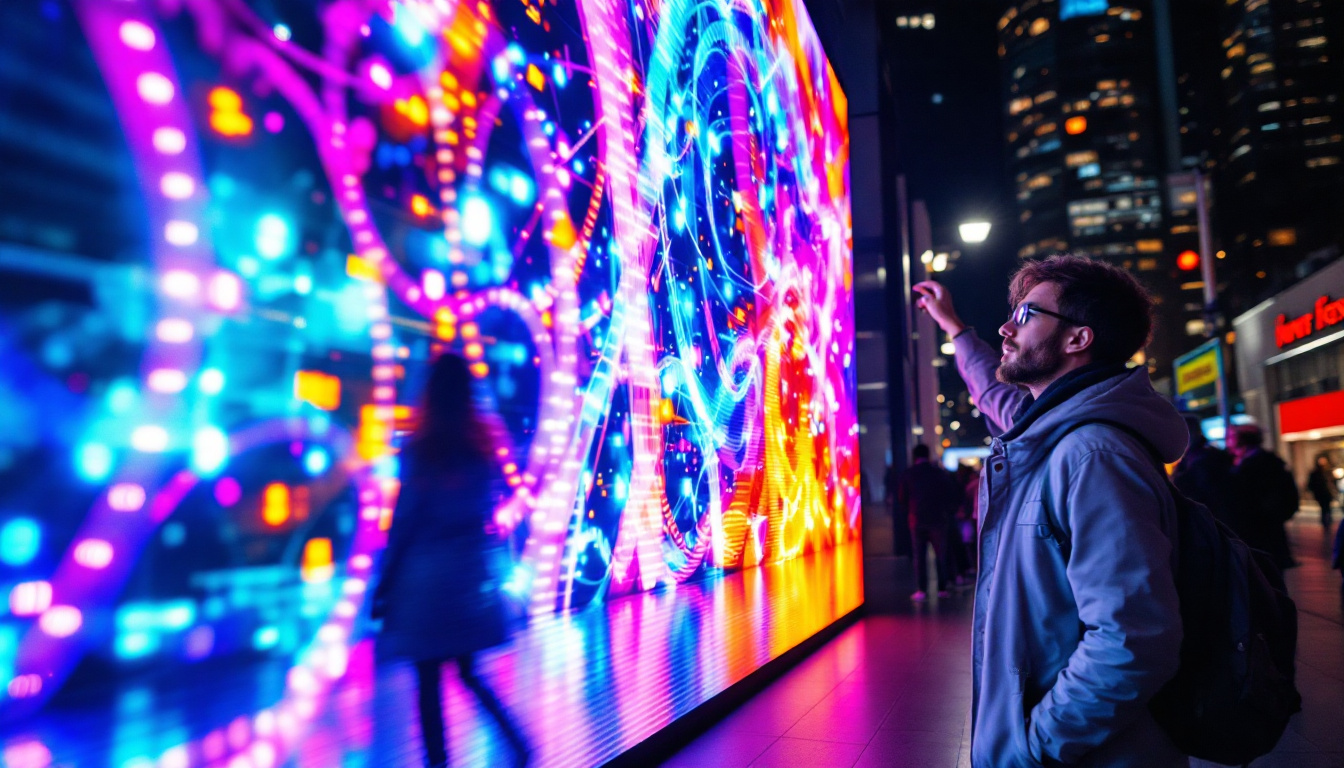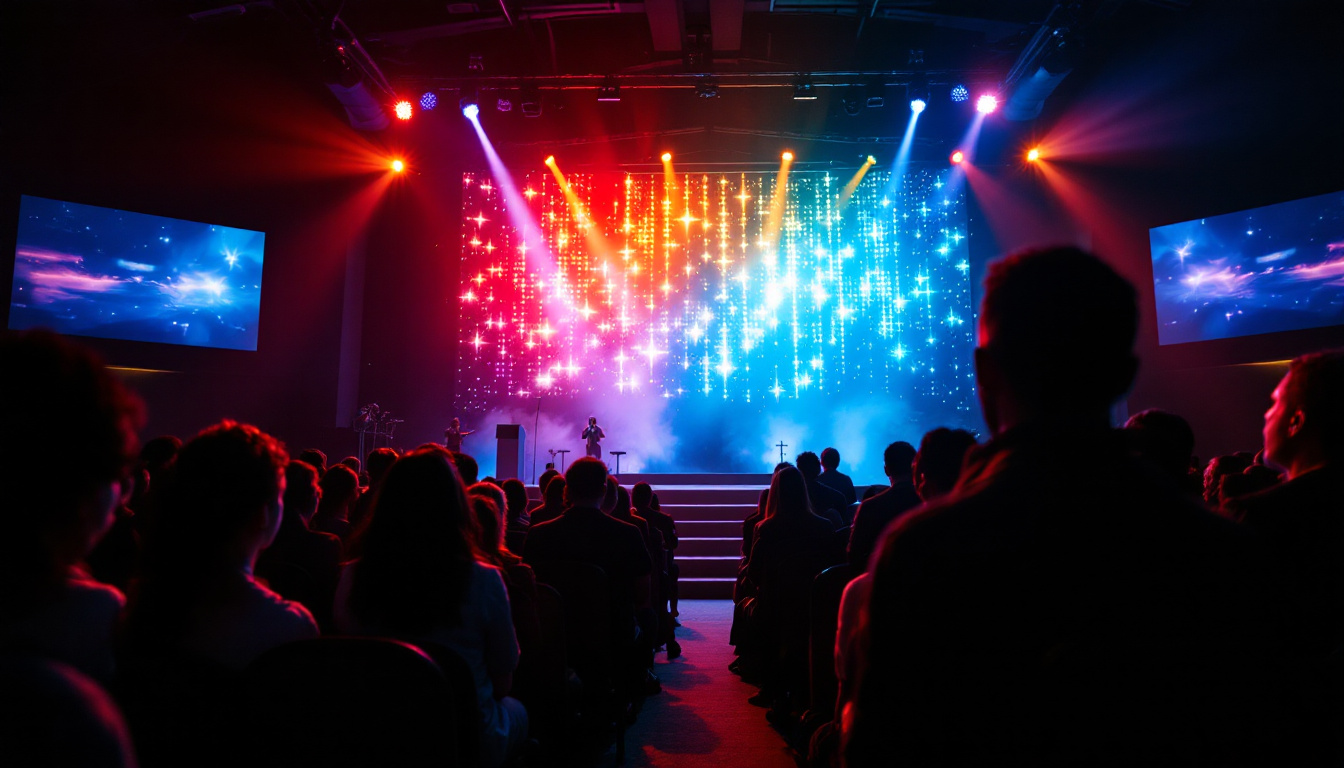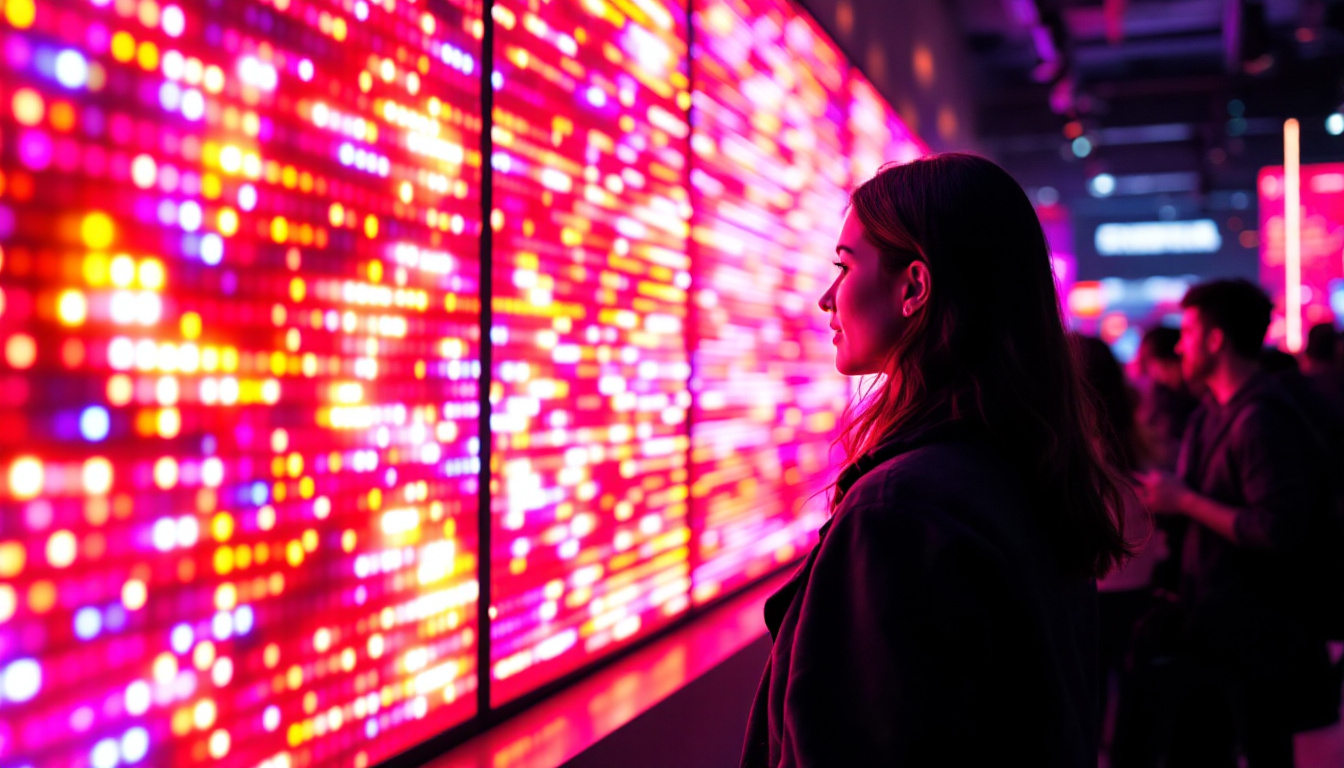In today’s digital age, LED displays have become an essential part of our daily lives. From smartphones and televisions to large outdoor billboards, the versatility and efficiency of LED technology have made it a preferred choice for various applications. This article aims to provide an in-depth understanding of LED displays, their working principles, types, advantages, and their impact on the future of display technology.
Understanding LED Technology
LED, or Light Emitting Diode, is a semiconductor device that emits light when an electric current passes through it. Unlike traditional incandescent bulbs, which generate light through heat, LEDs produce light more efficiently and with less energy consumption. This fundamental difference is what makes LEDs an attractive option for display technology. The longevity of LEDs, often lasting tens of thousands of hours, further enhances their appeal, reducing the need for frequent replacements and contributing to lower maintenance costs.
The Science Behind LEDs
At the core of an LED is a semiconductor material, typically composed of elements such as gallium, arsenic, or phosphorus. When electricity flows through the semiconductor, electrons recombine with holes (the absence of electrons) in the material, releasing energy in the form of photons—this is the light that we see. The color of the emitted light depends on the energy bandgap of the semiconductor material used. This precise control over color and intensity allows for a wide range of applications, from simple indicator lights to complex display systems that require specific color outputs for accurate representation.
LEDs can be categorized into two types: organic LEDs (OLEDs) and inorganic LEDs. While OLEDs are known for their vibrant colors and flexibility, inorganic LEDs dominate the market due to their durability and brightness. Understanding these differences is crucial when selecting the appropriate LED technology for specific applications. For instance, OLEDs are often favored in mobile devices and televisions for their ability to produce deep blacks and a wider viewing angle, while inorganic LEDs are typically used in environments where durability and performance under varying conditions are paramount, such as in automotive lighting and industrial applications.
Types of LED Displays
LED displays come in various forms, each designed for specific uses. The most common types include:
- Direct View LED Displays: These displays consist of individual LEDs arranged in a grid. They are commonly used for large outdoor billboards and digital signage. Their high brightness and visibility make them ideal for advertising in bright sunlight, capturing the attention of passersby.
- LED Backlit Displays: These displays use LED lights to illuminate an LCD panel from behind, enhancing brightness and contrast. They are widely used in televisions and computer monitors, providing a thinner profile compared to traditional CCFL backlighting while also offering improved energy efficiency.
- MicroLED Displays: A newer technology, MicroLEDs consist of microscopic LEDs that can be individually controlled. They offer exceptional brightness and color accuracy, making them ideal for high-end applications. This technology promises to revolutionize the display industry by combining the best aspects of OLED and LCD technologies, potentially leading to displays that are not only brighter and more vibrant but also more energy-efficient.
Advantages of LED Displays
LED displays offer numerous advantages over traditional display technologies. Their benefits extend beyond just energy efficiency, impacting performance and user experience significantly.
Energy Efficiency
One of the most significant advantages of LED displays is their energy efficiency. LEDs consume considerably less power than traditional incandescent or fluorescent lights. This not only reduces electricity costs but also minimizes the environmental impact, making them a more sustainable choice. Furthermore, the reduced energy consumption contributes to lower carbon emissions, aligning with global efforts to combat climate change. As businesses and organizations increasingly prioritize sustainability, the adoption of LED technology becomes a strategic advantage in enhancing their corporate social responsibility initiatives.
Brightness and Visibility
LED displays are known for their high brightness levels, making them easily visible even in direct sunlight. This characteristic is particularly beneficial for outdoor advertising and public information displays, where visibility is paramount. Additionally, the ability to adjust brightness levels dynamically allows for optimal performance in varying lighting conditions. This adaptability not only ensures that the content is always legible but also enhances the overall aesthetic appeal of the display. Moreover, the vibrant colors produced by LED technology can captivate audiences, making advertisements more engaging and effective in conveying messages.
Longevity and Durability
LEDs have a longer lifespan compared to traditional display technologies. While an average incandescent bulb lasts about 1,000 hours, LEDs can last up to 50,000 hours or more. This durability translates to lower maintenance costs and reduced frequency of replacements, making them a cost-effective solution in the long run. Additionally, LED displays are more resistant to shock and vibration, which makes them ideal for high-traffic environments and outdoor settings where they may be exposed to harsh weather conditions. This resilience not only enhances their operational reliability but also contributes to a lower total cost of ownership, as businesses can allocate resources more efficiently without the constant need for repairs or replacements.
Applications of LED Displays
The versatility of LED displays has led to their widespread adoption across various industries. From entertainment to transportation, their applications are vast and varied.
Advertising and Marketing
One of the most prominent uses of LED displays is in advertising and marketing. Digital billboards, interactive displays, and storefront signage leverage the vibrant colors and dynamic content capabilities of LEDs to attract customers. The ability to change messages in real-time allows businesses to respond quickly to market trends and consumer behavior. Moreover, the integration of sensors and data analytics with LED technology enables targeted advertising, where messages can be tailored based on the demographics and preferences of the audience passing by, creating a more personalized shopping experience.
Entertainment and Events
In the entertainment industry, LED displays play a crucial role in concerts, theaters, and sporting events. Large-scale LED screens are used to enhance the visual experience for audiences, providing vivid imagery and real-time information. The flexibility of LED technology allows for creative installations that can transform any venue. For example, in live performances, LED walls can be synchronized with music and lighting effects, creating an immersive environment that captivates the audience. Additionally, the rise of virtual and augmented reality experiences has led to innovative uses of LED displays, where they serve as backdrops or interactive elements that engage viewers in new and exciting ways.
Transportation and Public Information
LED displays are also widely used in transportation systems for displaying real-time information. From train stations to airports, LED screens provide essential updates on schedules, delays, and directions. Their high visibility ensures that passengers can easily access information, enhancing overall efficiency and safety in public transport systems. Furthermore, the implementation of LED technology in traffic management systems has improved road safety; dynamic message signs can alert drivers to changing conditions, accidents, or road closures, allowing for informed decision-making while on the road. This not only aids in reducing congestion but also plays a significant role in emergency response situations, ensuring that critical information reaches drivers promptly.
The Future of LED Display Technology
As technology continues to evolve, the future of LED displays looks promising. Innovations in materials, design, and functionality are paving the way for even more advanced display solutions.
Advancements in MicroLED Technology
MicroLED technology is at the forefront of display innovation. With the ability to create displays that are thinner, lighter, and more energy-efficient, MicroLEDs are set to revolutionize the market. Their potential applications range from flexible screens to high-resolution televisions, offering consumers unprecedented visual experiences.
Integration with Smart Technologies
As smart technologies become more prevalent, the integration of LED displays with IoT (Internet of Things) devices is expected to grow. This integration will enable more interactive and responsive displays, allowing users to engage with content in new ways. For instance, smart home systems could utilize LED displays for notifications, alerts, and even as part of home décor.
Sustainability Initiatives
With increasing awareness of environmental issues, the display industry is also focusing on sustainability. Future LED displays are likely to incorporate recyclable materials and energy-efficient manufacturing processes. These initiatives will not only reduce the carbon footprint of production but also promote a circular economy in the electronics industry.
Challenges Facing LED Display Technology
Despite the numerous advantages, LED display technology faces several challenges that need to be addressed for continued growth and adoption.
Cost Considerations
While the prices of LED displays have decreased over the years, the initial investment can still be significant, particularly for large installations. This cost barrier can deter some businesses from adopting LED technology, especially small enterprises with limited budgets. However, as technology advances and production scales up, prices are expected to become more accessible.
Heat Management
LEDs generate heat during operation, which can affect their performance and longevity if not managed properly. Effective heat dissipation mechanisms are essential to ensure optimal functioning and prevent damage. Manufacturers are continually researching and developing better cooling solutions to address this issue.
Color Accuracy and Calibration
Achieving accurate color reproduction can be challenging with LED displays, particularly in applications where color fidelity is crucial, such as in art galleries or photography. Calibration processes must be implemented to ensure that colors are displayed as intended. Ongoing advancements in technology aim to improve color accuracy and simplify calibration processes.
Conclusion
LED displays represent a significant advancement in display technology, offering numerous benefits such as energy efficiency, brightness, and durability. Their applications span across various industries, making them an integral part of modern life. As technology continues to evolve, the future of LED displays looks bright, with innovations in MicroLED technology, smart integration, and sustainability initiatives paving the way for even more exciting developments.
While challenges remain, the ongoing research and development in the field promise to address these issues, ensuring that LED displays will continue to play a vital role in shaping the visual landscape of the future. Embracing this technology not only enhances user experience but also contributes to a more sustainable and efficient world.
Explore the Future of Visual Communication with LumenMatrix
As we look towards a future brightened by the advancements in LED display technology, LumenMatrix stands at the forefront of this revolution. Embrace the opportunity to elevate your brand’s presence and captivate your audience with our comprehensive range of LED display solutions. From the immersive Indoor LED Wall Display to the dynamic Outdoor LED Wall Display, and from the mobile versatility of Vehicle LED Displays to the innovative LED Transparent Display, LumenMatrix is committed to enhancing your visual storytelling. Discover how our cutting-edge digital signage and LED displays can transform your communication strategy. Check out LumenMatrix LED Display Solutions today and step into the future of engaging, impactful visual experiences.

